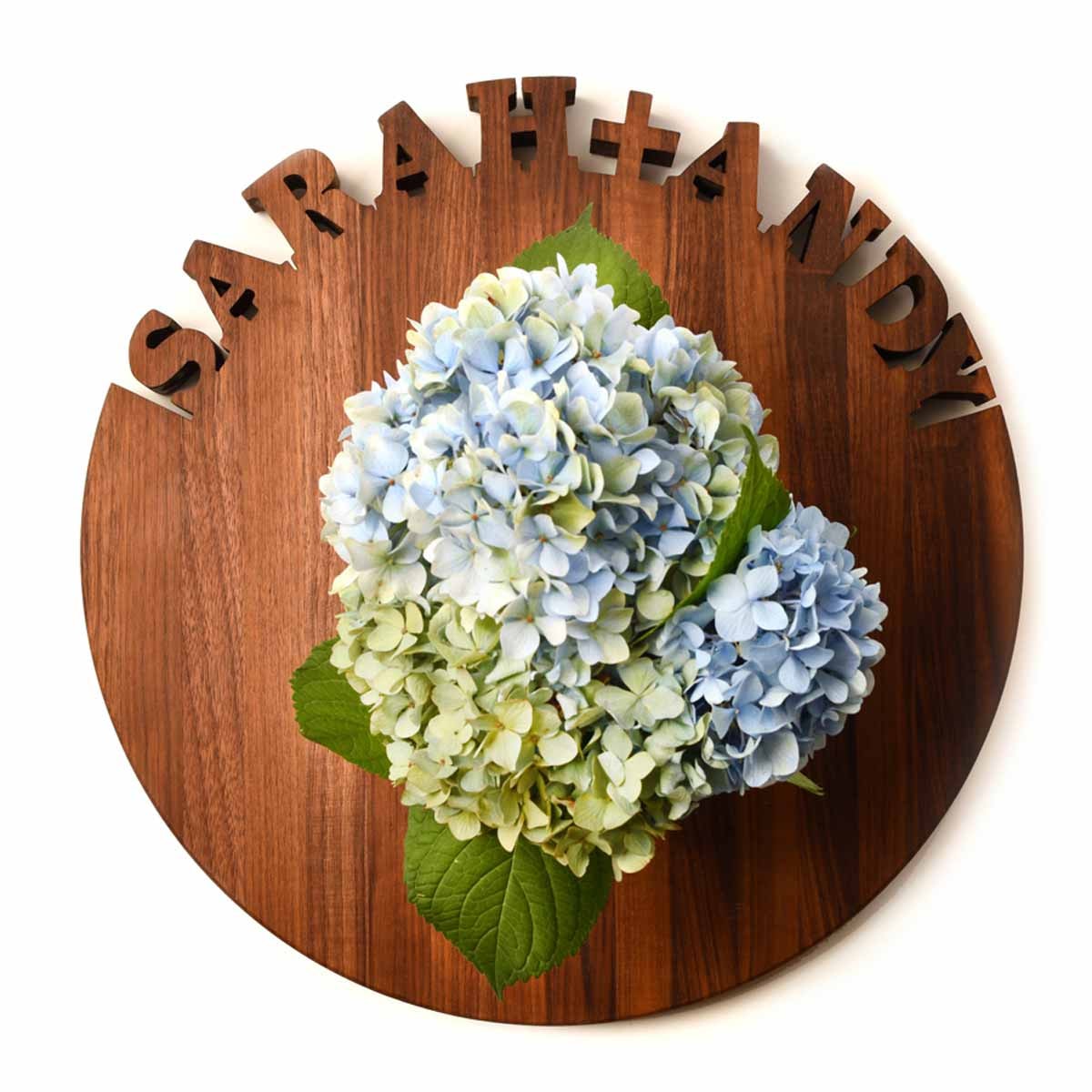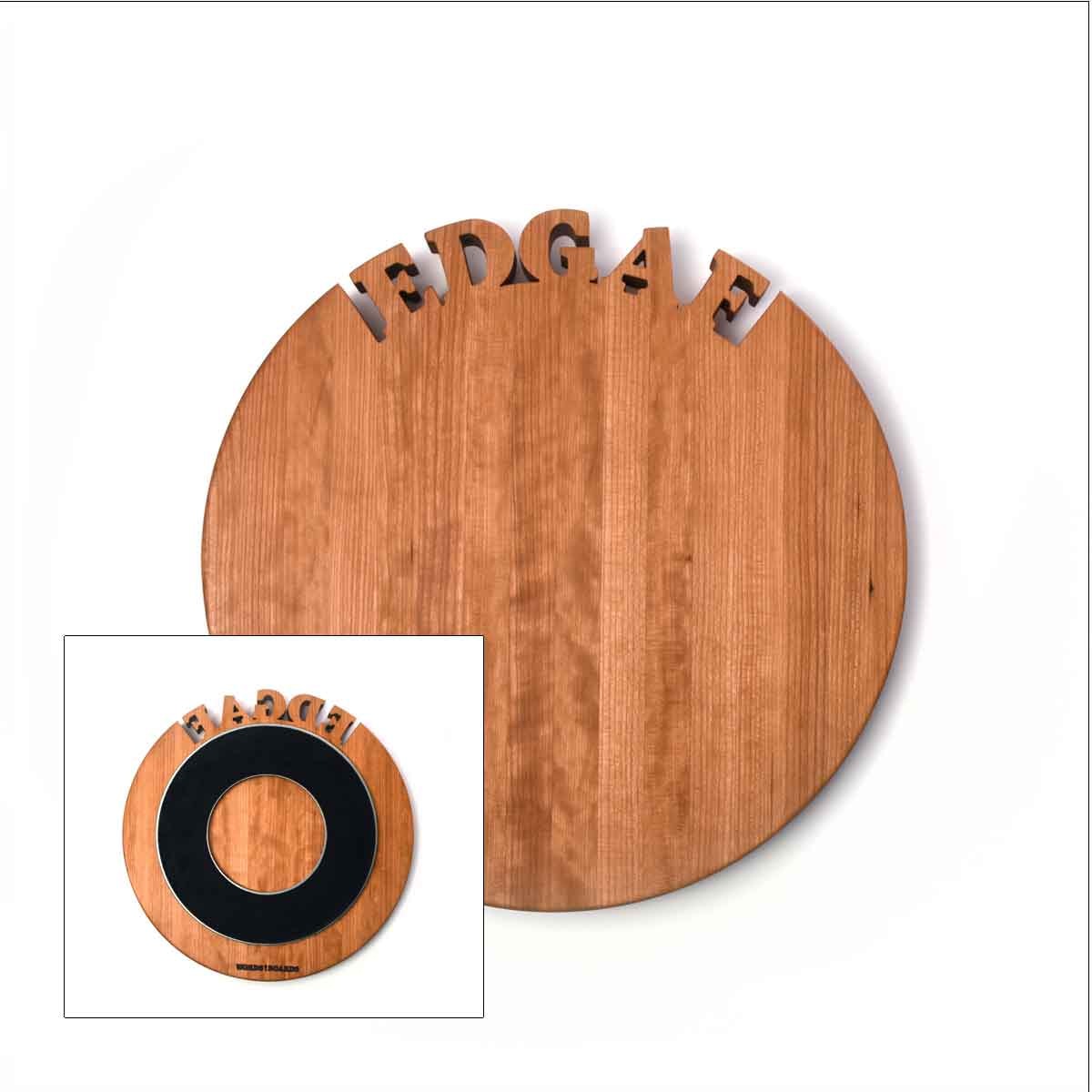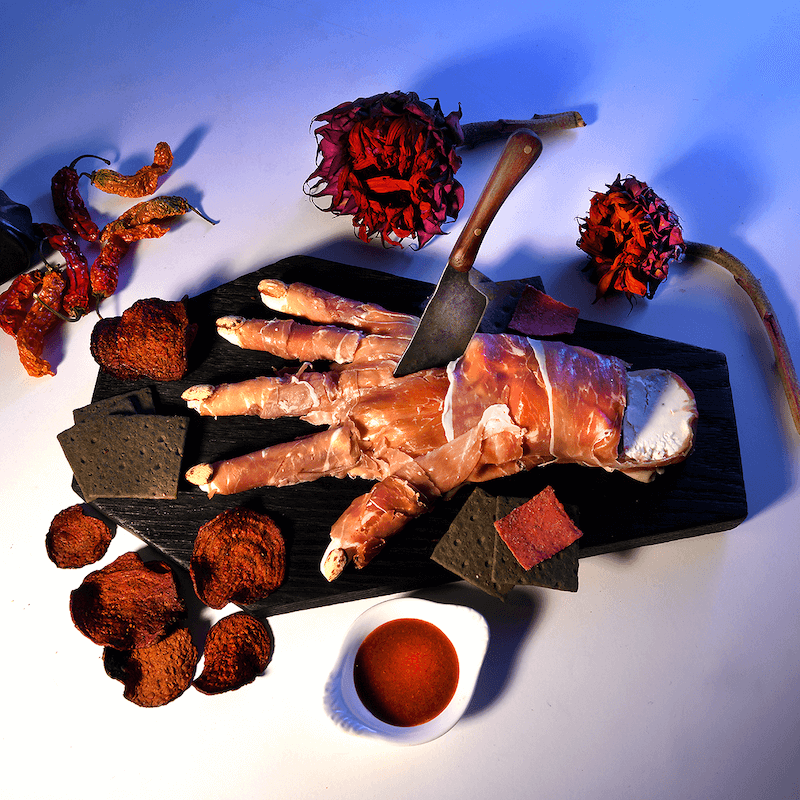Why Is It Called a Lazy Susan? - The Origin of the Name
June 21, 2024 5 min read

When we started making lazy Susans, we couldn’t help but wonder about its origins. What resulted was a deep dive into several sites to figure it all out. We started our search with the very simple question: what is a lazy Susan?
A lazy Susan is a rotating circular tray that is often made of wood — just like the one pictured above — that is placed on a table or countertop to make serving food or organizing condiments easier. The lazy Susan origin story is a fascinating one, and can be traced back to the 18th century! So, why is it called a lazy Susan? Discover the reasons with us.

What is a Lazy Susan Rotating Tray?
Similar to a turntable but for food, this handy tool is designed to make it easier for people to access different items of food on the table. That means no more worrying about having to reach across others or ask them to pass you the mashed potatoes. It has transformed the dining experience into a self-serving dinner table.
As we pondered the question why is it called a lazy Susan? we knew we had to do some research. We went to many sites and gathered tidbits from each to get the full story.
Lazy Susan Origin Story: Thomas Jefferson Invented
The earliest known lazy Susan-like object dates from 1780 and was sold at Christie’s auction a few years ago. The tray is made of mahogany and — like our version — it is 16 inches in diameter. We also offer a 16 inch cutting board.
It was called a “dumbwaiter.” Today, we think of dumbwaiters as those little manual elevators that ferry food between floors in fancy manor houses. But in the 18th and 19th centuries, the term referred both to the elevators and to rotating trays and tables similar to today’s version. The lazy Susan serves many of the same purposes as the dumb waiter, especially in Britain, and is considered a spin-off of this functional piece of furniture.
The term 'Lazy Susan' might have been a sarcastic reference to the supposed sloth of household servants in the 18th century.
There are various theories about who invented the lazy susan, including credit to Thomas Jefferson and Thomas Edison, and even the possibility that the term was styled on previous combinations in English that use names in a generic way.

Why is it Called a Lazy Susan?
The first known reference was in 1917, when in the December issue of Vanity Fair, the now-shuttered department store Ovington’s advertised a 16-inch rotating mahogany tray. Check out the Vanity Fair advertisement: “$8.50 forever seems an impossibly low wage for a good servant; and yet here you are; Lazy Susan, the cleverest waitress in the world,” read the copy.
So the “dumb” part of the waiter and the “lazy” part of the term lazy susan have similar roots. In both cases, the name refers to the tool’s ability to “replace” household staff.
But why Susan? Scholars of recent history seem to have pinpointed when it got its name, they haven’t been able to identify why. The lazy Susan meaning appears to be lost to history.
It’s interesting to note, though, that according to baby name data, Susan wasn’t even a terribly popular name in the early 1900s. In the 1950s and 1960s, it was one of the most common girl’s names out there. But in 1917? Barely on the radar.
Some theories even suggest a connection to names like black-eyed Susan, adding another layer of mystery to its origins.

The Lazy Susan Through the Years
According to the Smithsonian, rotating trays also have a long-standing relationship with Chinese culture and Chinese-American food. Though the modern day version seems to have European and American roots, Chinese literature from as far back as 1313 includes mentions of revolving tables.
George Hall, a soy sauce manufacturer and partner in popular San Francisco-area Chinese restaurants, reintroduced the tabletop turntables in his restaurants in the 1950s, contributing to their resurgence in popularity.
Those original tables weren’t food-related at all — they were designed as a way to organize Chinese characters into moveable type for printing. But they worked in a manner similar to today’s version.
Fast-forward six centuries to the middle of the 20th century and lazy Susans became familiar sights in Chinese-American restaurants, where they made sharing dim sum a whole lot easier.
This surge coincided with their peak popularity in suburban American homes. And, interestingly enough, with peak popularity of the name Susan itself. During the ‘50s, it was the fourth most popular girl’s name in the U.S. and in the 60’s, it came in third.
Is that a coincidence? Probably. It’s unlikely that American families decided, en masse, to name their daughters after rotating dining trays — especially ones that disparaged the girls’ work ethics.
Since the ‘60s, the name Susan has sunk on the “most popular baby names” lists — in 2018, it was the 1,079th most popular girl’s name in the U.S. — but lazy Susans themselves remain as useful as ever. Whether you’re serving dim sum, coffee and pastries, a selection of cheeses or a boring weeknight dinner, they make group dining easier…and a lot more fun.

Lazy Susan Meaning Frequently Asked Questions
Are there different types of lazy Susans?
Yes! There are several different varieties available. Most are circular and can spin 360°, while others are half rounds that can fit into corner cabinets. You may also be able to find some with several tiers.
They are often made of wood. We have three options available, ranging from cherry wood and maple wood to walnut!
Are lazy Susans only used for food?
While the lazy Susan origin story is all about using them for food, don't limit yourself! You could also use one to organize your spices and pots and pans, or even art supplies in a craft room.
Get creative — in situations where accessibility is key this handy tool can make all the difference.
How does a lazy Susan work?

It uses a simple rotating system made up of a base and a turntable. The base is stationary, and the turntable is able to spin thanks to a bearing or swivel mechanism. This is how a lazy susan works, allowing for easy access to items placed on it.
To turn one, all you need to do is touch it ever so slightly in the direction that you’d like it to go. It’s effortless!
Lazy Susans are Making a Comeback!
For years, I’ve thought these rotating trays were not only cool, but also useful. If there’s a better way to share family-style food with people, I can’t imagine what it is. Some theories even suggest that Thomas Jefferson had a hand in its invention.
A DIY meal is not quite the same without the spinning feature of a lazy Susan. Just pile the ingredients in small bowls and let everyone make their own tacos, fajitas, salad, you get the idea. Another theory attributes the invention to Thomas Edison, who created a turntable for his phonograph that later evolved into the lazy Susan.
The more you use one the more you will love it. This iconic kitchen tool will also impress your guests.
Our spin on the lazy susan includes personalized hand-cut names, nick names, last names, whatever you can think up! We offer 3 wood types — maple, cherry and walnut, and 2 sizes — 16” and 18”. Ours are made in the USA with materials sourced from the USA.
I hope we have answered your questions: What is a lazy Susan? Where did the lazy Susan meaning come from? Who is Susan? Why does she get such a bad rap? Is she really lazy? Now you know! There are even theories that Thomas Jefferson invented it in response to his daughter's complaints about being served last at the dinner table.
Leave a comment
Comments will be approved before showing up.
Also in Stories
Subscribe
Sign up to get the latest on sales, new releases and more …
Recent Articles
-
Halloween Charcuterie Boards: Entertaining Ideas
October 14, 2025
-
Pros and Cons of Wood Countertops
June 16, 2025
-
Wood Anniversary Gifts for Him
March 06, 2025
-
Monogrammed Charcuterie Board
February 12, 2025
-
Cutting Board Size - Choose The Right Size For Every Kitchen Task
January 26, 2025
-
Creating a Delicious Charcuterie Board with Bee Inspired Honey
November 29, 2024
-
Best Cutting Board Material: Wood or Plastic - Everything You Need to Know
June 24, 2024
-
Why Is It Called a Lazy Susan? - The Origin of the Name
June 21, 2024
-
5 Year Anniversary Symbol: Why is Wood the Gift?
June 13, 2024
-
What Makes a Great Walnut Cutting Board
June 13, 2024












